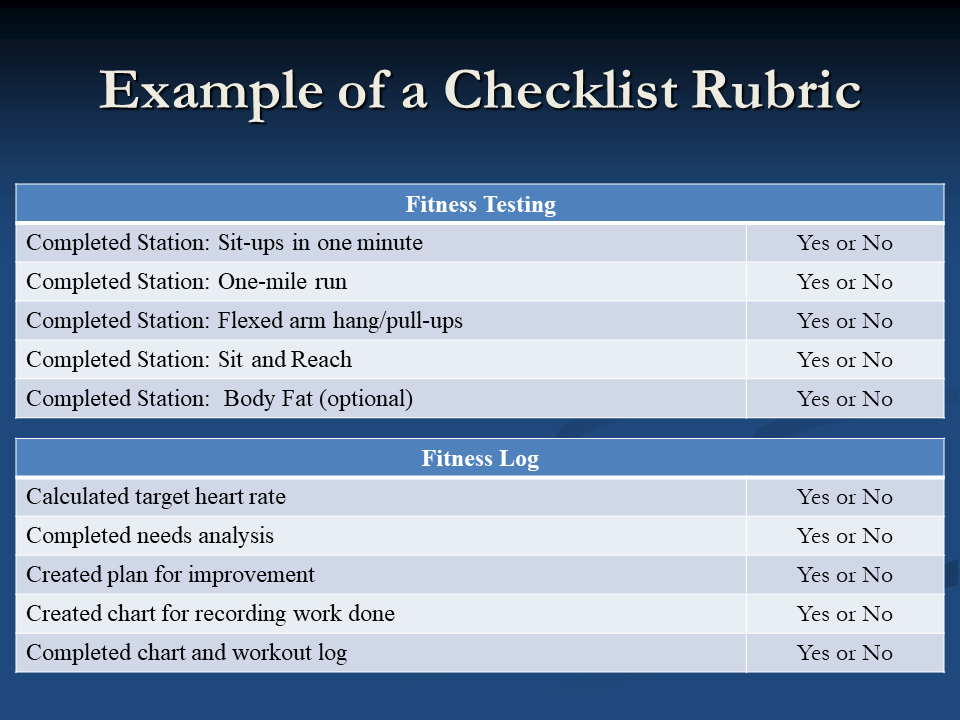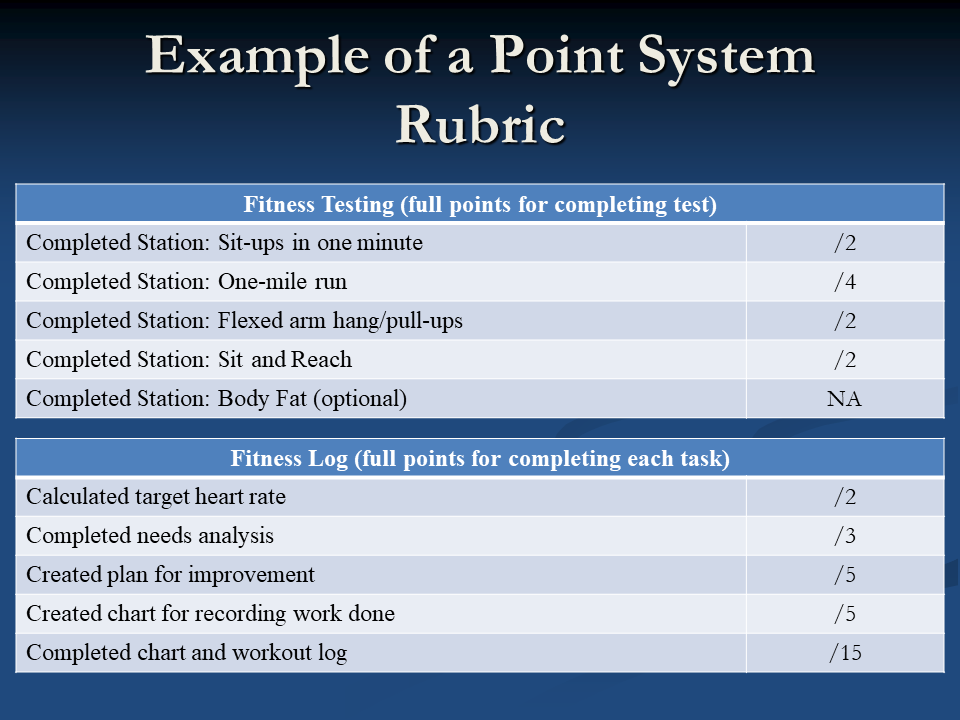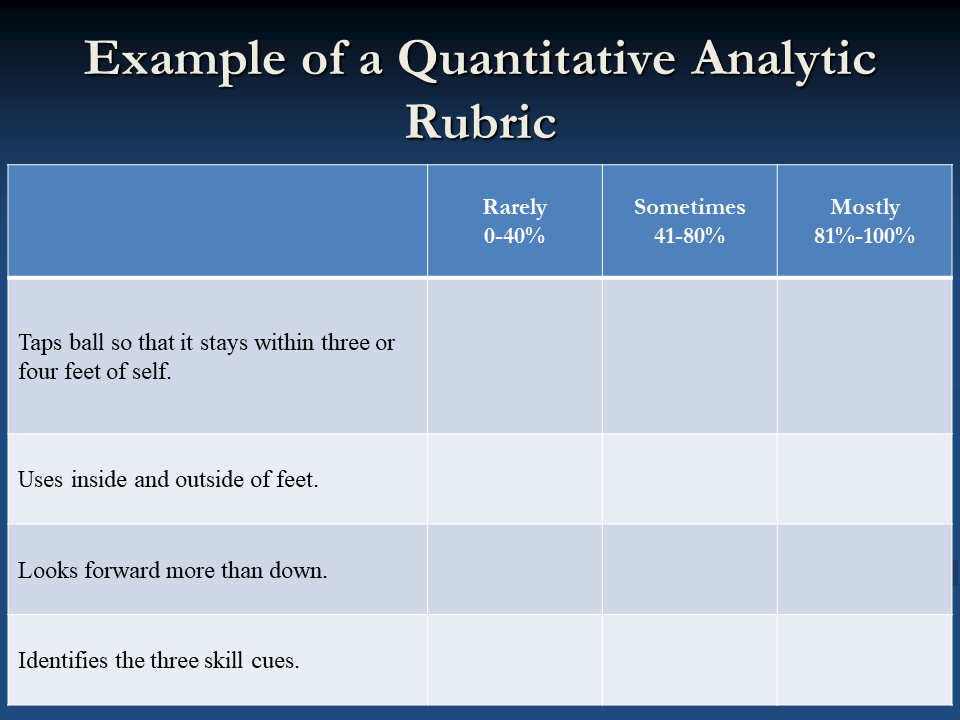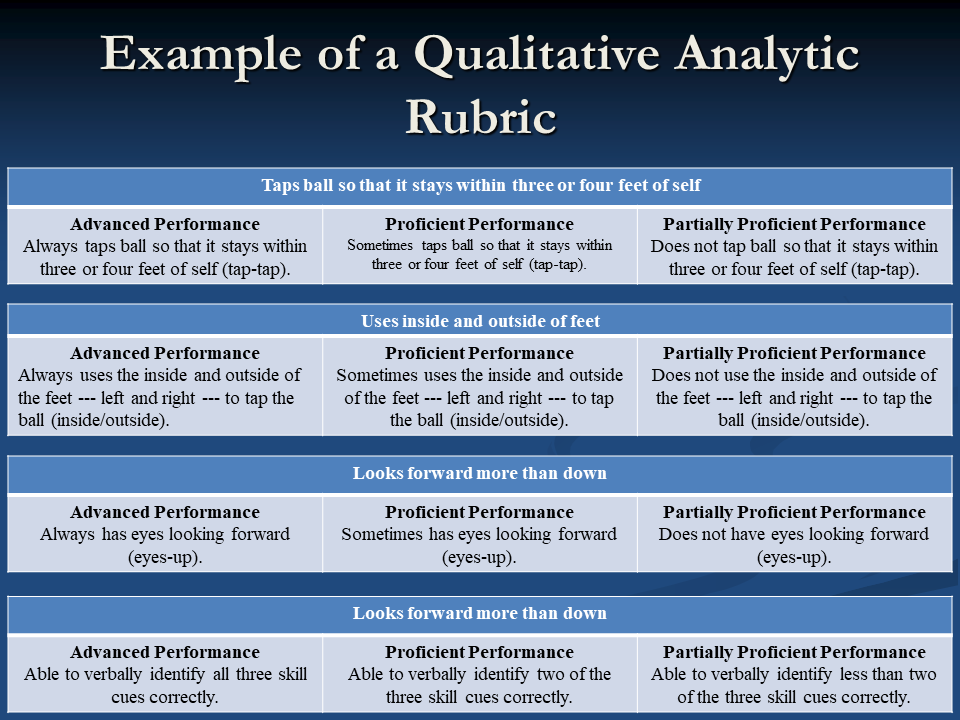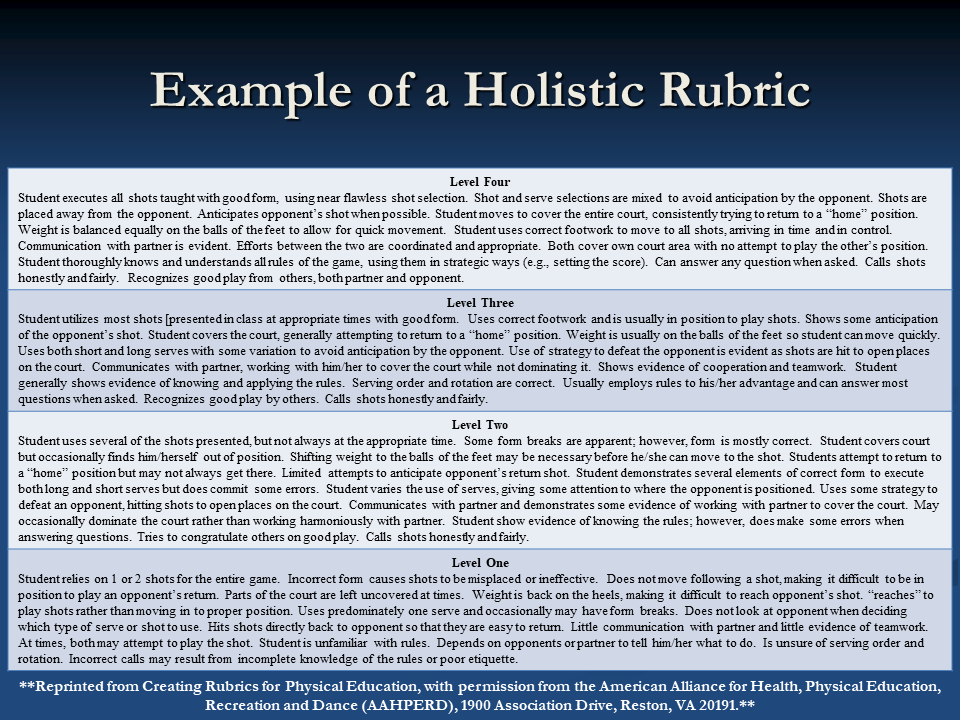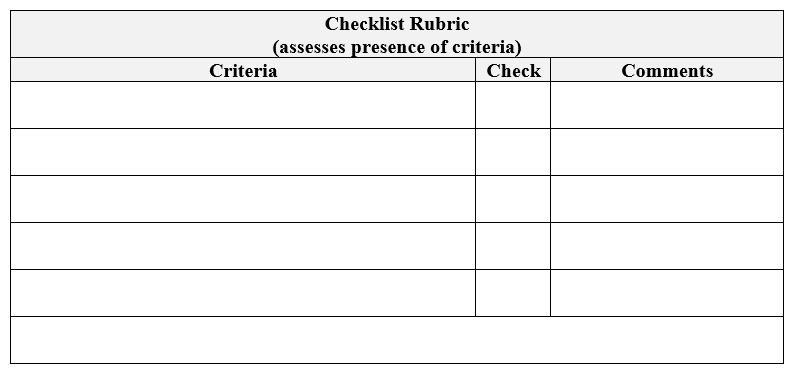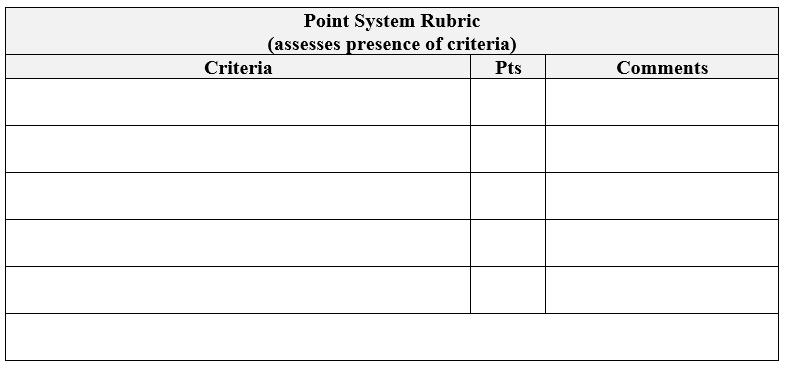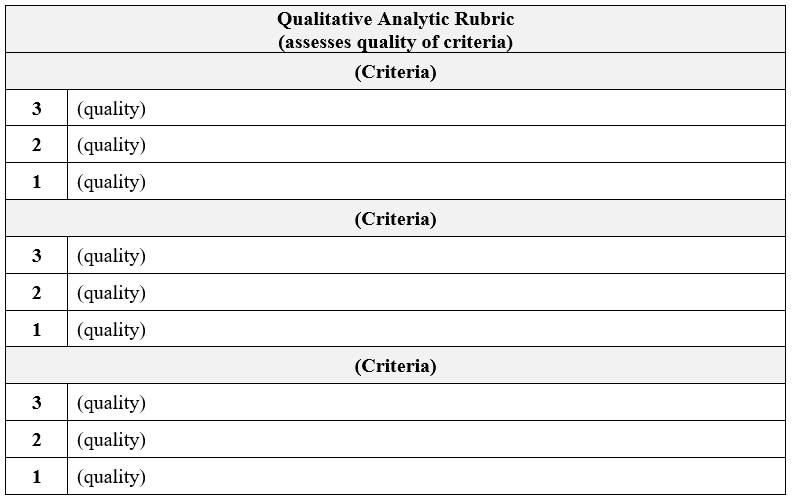Rubrics for Assessment
Rubrics are scoring tools with pre-established criteria that specify the level of quality for a performance on an assessment. Reasons to use rubrics includes:
- Defines what the target behavior or skill is and how to achieve it.
- Helps maintain instructional alignment with learning objectives.
- Helps teachers be more accurate, objective, and unbiased in grading.
- Informs students and parents of the expectations for the task.
SHAPE America Appropriate Practices
- 4.2.2 Assessments include clearly defined criteria that are articulated to students as part of instruction before the assessment.
Additional Appropriate Practices:
- Be flexible when evaluating (there may be more than 1 correct answer).
- Expect to revise.
- Set the top level as something challenging but achievable and set one level as the minimum cut score.
- Use standards as guidelines and include benchmarks or exemplars.
